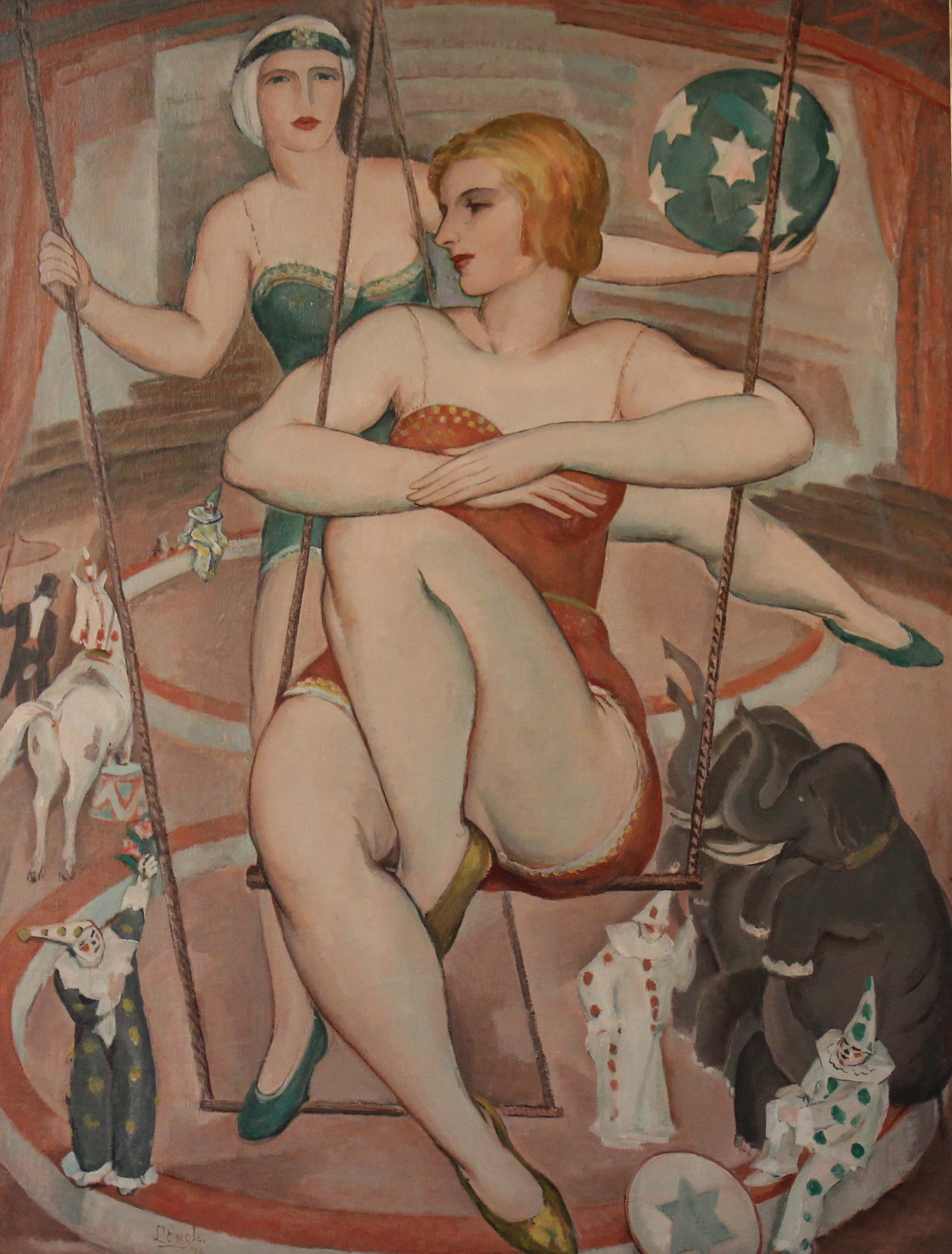The L'Engles & Co.
July 31, 2020

This is William L'Engle's Trapeze Artists.
In 1924, the L’Engles decided that Provincetown was too “busy” so they moved to the nearby town of Truro and purchased The Shebnah Rich house on Long Nook Road which became the L’Engles’ home, studio and source of inspiration and beauty for over 50 years. It was very much an artists’ and writers’ salon on the Outer Cape and they were well known for their wild artist parties! Bill was known for frolicking on the piano and keeping the parties hopping until the wee hours especially during the prohibition years.
A large number of artists with whom they were intimate in both Provincetown and Truro included: Charles Hawthorne and Marion Campbell, Eugene O’Neill, Gerrit Beneker, Oscar Gieberich, Susan Glaspell and George Cram Cook, John Dos Passos and Katherine Smith, Frank and Edith Shay, Hutchins Hapgood and Neith Boyce, Edmund Wilson and Mary McCarthy, William and Marguerite Zorach, Chauncey and Mary Hackett, Jerry Farnsworth and Helen Sawyer, Paul and Nina Chavchavadze, Polly Boyden, Eben and Thelma Given, Peggy and Clarence Day, Edna St.Vincent-Millay, Charles Demuth, Childe Hassam, Oliver Chaffee, Albert Gleizes, Francis and George Biddle, George and Shirley Yater, Edwin Dickinson, William Hallsall, Blanche Lazzell, Ross Moffett, Phyllis Duganne , E. Ambrose Webster, Karl Knaths and Helen Weinrich, Agnes Weinrich, Waldo and Mary Frank, Todd Lindenmuth and Elizabeth, Robert Nathan, Charles and Marguerite Kaseleau, Mary Heaton Vorse, Bruce McKain, Marston and Lucy Hodgins, Sheldon Dick, John and Tiny Worthington, Wilbur Daniel Steele and Marguerite, and Harry Kemp, “the poet of the dunes,” to name a few!
William frequently took his subjects from the world of entertainment: dancers, acrobats, trapeze artists, wrestlers, and baseball players appear repeatedly in his work. He was greatly interested in the body in motion and in representing it solely by means of line. Dancers were a recurrent theme in the L’Engles’ art during the Twenties and Thirties. William completed a large amount of drawings of the members of Martha Graham’s dance troupe and created a large number of watercolors and pencil drawings that captured the life and spirit of the Jazz Age, which emerged after the First World War and found its zenith in the Harlem nightclubs of New York City. - Julie Heller
Lucy L'Engle describes her paintings as "a play of form and color-imaginative rather than realistic-emphasizing the abstract." She had a conventionlal school training for five years, both at the Art Studenlts League and in Paris, but found that the modern ideas of form and color interested her more. - American Art News, Vol. 20, No. 21 (Mar. 4, 1922)

